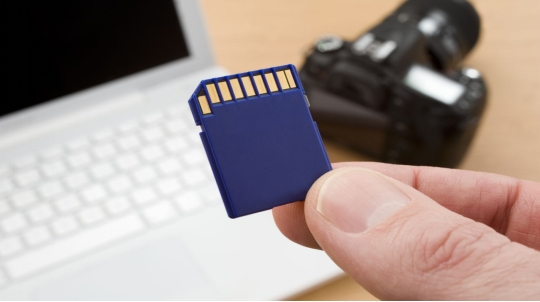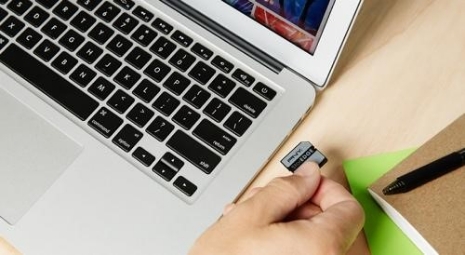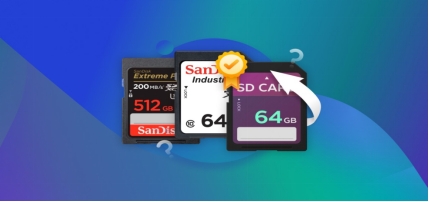[5 Solutions] How to Recover Deleted Files from SD Card?
Losing important files from an SD card can be frustrating, especially when it contain important photos, videos, or documents. Fortunately, deleted data isn’t always gone forever, with the right methods and tools, you can often recover it successfully.
This guide explains why files can still be recovered after deletion and walks you through how to recover deleted files from SD card with the most effective ways.
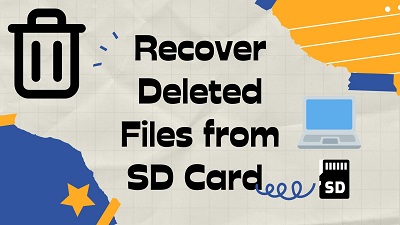
Can Deleted Files Be Recovered from an SD Card?
Yes, in most cases, deleted files can be recovered from an SD card, as long as the data hasn’t been overwritten. When you delete a file, the system doesn’t erase it right away, it simply marks the space as “available” for new data. That means your files are still there, just hidden from view.
The key is to stop using the SD card immediately after deletion to prevent new files from replacing the old data. And with the help of reliable SD card recovery methods, you can often restore your lost files safely.
How to Recover Deleted Files from SD Card?
Now that you know deleted files can often be recovered, let’s look at the practical steps to get them back by using recovery software and built-in options.
Method 1: Check the “Recently Deleted” Folder
If you’ve been using your SD card as the storage medium on your Android phone, your deleted photos or videos might not be gone right away.
Many built-in photo apps, such as Samsung Gallery or Google Photos, temporarily move deleted items to a “Recently Deleted” or “Trash” folder instead of erasing them immediately.
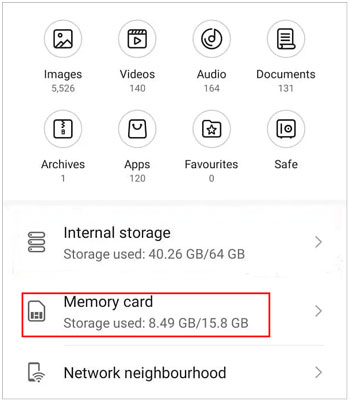
Checking this folder is the quickest and easiest way to restore your files without using any recovery software. Let's see how can you recover deleted files from micro SD card within minutes:
- Open your phone’s Gallery or Photos app.
- Go to the Albums or Library tab.
- Scroll down and find the “Recently Deleted” or “Trash” folder.
- Browse the deleted items to find the photos or videos you want to restore.
- Select the files and tap "Restore". The files will return to their original location on the SD card.
- ⏱ Files in the “Recently Deleted” folder are usually kept for 30 days before being permanently deleted.
- 📁 If you deleted the files using a computer, camera, or file manager app, they won’t appear in this folder. That means this feature is available only if you were using the SD card on your phone as the default storage.
Method 2: Restore from Cloud Backup
Restoring from a cloud backup is another easy way to recover deleted files from an SD card, but it only works in specific cases. You can use this method only if:
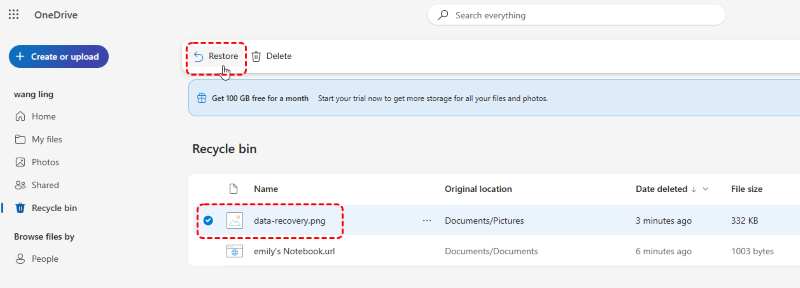
- The SD card was used on a phone that automatically backed up your photos, videos, or files to a cloud service such as Google Photos, OneDrive, or Dropbox before deletion.
- The SD card was used in a Wi-Fi–enabled camera that was connected to a cloud account and had cloud backup turned on before the files are deleted.
Therefore, if your SD card was used in a regular camera or device without cloud sync, this method won’t be available. And it's recommended to use an SD card recovery software.
Method 3: Use File History or Backup on PC
If you’ve ever connected your SD card to a Windows computer and enabled File History or another backup tool, you might be able to restore deleted files from there.
Windows automatically saves copies of your files at regular time, so you can recover previous versions even after they’ve been removed from the SD card. This method only works if a backup was set up before the deletion.
Here's how to recover deleted files from SD card without software:
- Insert the SD card into your Windows PC.
- Open File Explorer and navigate to the folder where the deleted files were originally stored.
- Right-click the folder and select "Restore previous versions".

- Browse the available versions and select the one that contains your deleted files.
- Click "Restore" to recover the files to their original location, or choose "Copy" to save them elsewhere.
Method 4: Use SD Card Data Recovery Software [100% Work]
When files are permanently deleted from an SD card or the card has been formatted, built-in tools or backups often won’t help. In these cases, using a dedlcated tool like 4DDiG data recovery software can help.
It can scan the SD card deeply to recover deleted photos, videos, documents, and more, even if the SD card became corrupted or unreadable. It’s a practical solution for everyday accidents without requiring technical skills.
Secure Download
Secure Download
Here're some key features of 4DDiG:
| Category | Details |
|---|---|
| 💾 Supported Memory Cards | SD, SDHC, SDXC, microSD, microSDHC, microSDXC, CF cards, XD cards, Memory Stick... |
| 📷 Supported Devices | Cameras like Canon, Nikon, Sony, Fujifilm, Olympus, Panasonic, GoPro, Samsung, Pentax, Leic; Others like drones, dashcams... |
| 💿 Supported File Systems | FAT16, FAT32, exFAT, NTFS, HFS+, APFS, EXT2/3/4... |
| 📇 Supported RAW Files | .CR2, .CR3, .NEF, .NRW, .ARW, .ORF, .RAF, .RW2, .DNG, .SR2, .SRW... |
| 🧐 Supported Data Loss Scenarios | Accidental deletion, formatted SD card, SD card corruption or unreadable card, system crash or OS reinstallation, improper ejection or sudden power loss... |
Follow the detailed tutorial to use this best program to recover deleted files from sd card.
- Insert the SD card into your computer and open 4DDiG. From the main interface, select the “SD Card” option and click “Scan” to begin searching for lost files.

- 4DDiG will automatically perform a scan. Once it’s complete, you can browse the deleted files in the tree-view panel on the left. To narrow down your search, use the “Filter” function to display specific file types, such as photos, videos, documents, or emails.

- Double-click any file to preview its content. Then select the files you want to recover and click “Recover” to save them to a safe location on your computer or another external storage device.

Method 5: Recover Using Command Prompt
Windows provides built-in command-line tools that can sometimes recover deleted files from an SD card. Using commands like chkdsk or attrib, you can try to repair the SD card and restore hidden or lost files.
This method is more technical than using software as it requires basic familiarity with Command Prompt. If the commands are entered incorrectly, this step could affect other drives.
Steps on how to recover deleted files from an SD card using the Command Prompt:
- Insert the SD card into your Windows PC.
- Press Win + S, type "cmd", right click on "Command Prompt" and choose "Run as administrator".

- To check and repair the SD card, type
chkdsk X: /fand press "Enter". (ReplaceXwith the drive letter of your SD card.) - To attempt recovery of hidden or lost files, type
attrib -h -r -s /s /d X:\*.*and press "Enter". (ReplaceXwith your SD card’s drive letter.)
- After the commands finish running, check the SD card in File Explorer for recovered files.
This method is mainly effective for files that are hidden or marked as read-only rather than permanently deleted files.
Why My Files Get Deleted from SD Card?
Files on an SD card can be lost or deleted for a variety of reasons, some accidental and some due to technical issues. Understanding these common causes can help you prevent future data loss:
- Accidental Deletion: Files may be deleted by mistake on your phone, camera, or computer.
- Formatting the SD Card: Formatting erases all data, either intentionally or accidentally.
- SD Card Corruption: Improper ejection, sudden removal, virus attacks, or file system errors can corrupt the card and make files inaccessible.
- Physical Damage: Drops, water exposure, or other impacts can damage the SD card and cause data loss.
- Virus or Malware Attacks: Malicious software can delete, hide, or corrupt files on your SD card.
- System Crashes: Unexpected shutdowns during file transfer or saving can cause files to be lost or corrupted.
How to Prevent Data Loss from Your SD Card in the Future?
Preventing data loss from your SD card is much easier than trying to recover lost files later. Here are some effective tips to reduce the risk of accidental deletion, corruption, or other issues:
- Regular Backups: Frequently back up your SD card files to a computer, cloud storage, or another external drive.
- Safely Eject Your SD Card: Always eject the card properly before removing it from your device to avoid corruption.
- Avoid Physical Damage: Keep your SD card in a protective case to avoid unexpected physical shocks.
- Use Reliable Devices and Readers: Use high-quality cameras, phones, and card readers to reduce the chance of read/write errors.
- Keep Antivirus Protection Enabled: Scan your SD card regularly to prevent malware or virus attacks.
- Do Not Fill the Card Completely: Maintain some free space on your SD card to prevent file system errors and slow performance.
Conclusion
Losing files from an SD card can be stressful, but in most cases, recovery is possible if you act promptly. Whether you use built-in features, employ SD card data recovery software like Tenorshare 4DDiG, or try Command Prompt, there are multiple ways to get your data back.
Also, you can follow our tips to minimize future risks. With the right approach, you can protect your data and recover lost files efficiently when accidents happen.
Secure Download
Secure Download
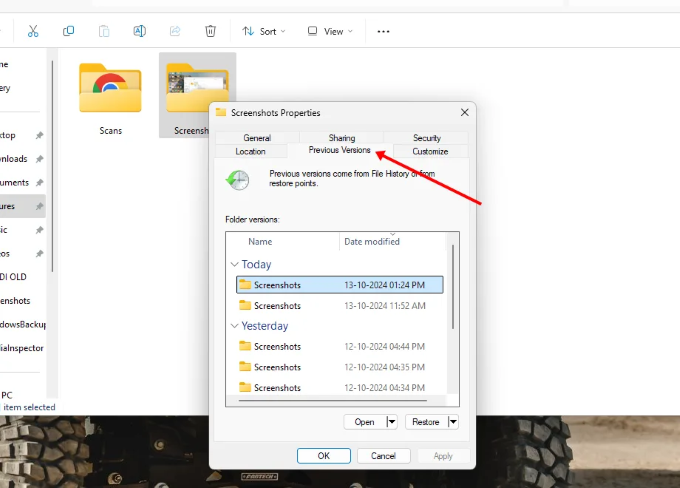



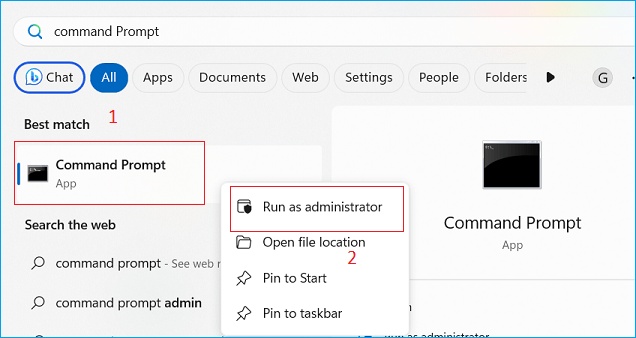

 ChatGPT
ChatGPT
 Perplexity
Perplexity
 Google AI Mode
Google AI Mode
 Grok
Grok


